History of the Komusō
Komusō: An Overview of the Monks of Emptiness
The shakuhachi-playing mendicant monks called komusō occupy a meaningful part of shakuhachi tradition, and their meditative songs, (honkyoku), and the shakuhachi's connection to Zen Buddhism are access points for many people intrigued by the traditional Japanese bamboo flute and its culture.This article is intended as an overview of what's currently accepted concerning the komusō and their history. We'll also touch on some of the more hagiographic stories - the legends and myths that are perpetuated as some of the more romantic notions about the komusō and their sect, the Fuke-shū.
For those desiring a deeper look into the details of research on the komusō, there's a recommended reading list at the end of this article.
The basics
The general picture of komusō usually includes the following elements:They existed during Japan's Edo Period (1605 - 1867). Their members came from the samurai class.
The komusō belonged to a sub-sect of Rinzai Zen Buddhism called the Fuke-shū who, at their height, had many temples across Japan.
The komusō wore special woven basket-like headgear, (tengai), which obscured their faces whenever they left their temples to travel or beg for alms (fig. 1).
They wore small wooden boxes, (gebako), hanging around their necks, for collecting gifts of fruit or rice to bring back to their respective temples.
For their kimono, the choices were either simple black or white without any pattern.
Over their shoulders they wore simple cloth coverings (okesa) that announced their Buddhist affiliation.
They played the shakuhachi, the traditional Japanese end-blown bamboo flute, and used it for religious purposes, including meditation.
The Fuke-shū was disbanded by governmental decree in the mid-19th century and the komusō lost their exclusive right to use the shakuhachi.
Many former komusō became shakuhachi teachers as it became a secular music instrument.
A slightly more detailed history:
The shakuhachi in Japan
The first shakuhachi appeared in Japan around the middle of the 8th century as gifts from the Chinese. These instruments still exist in the National Treasure House, (the Shoso-in) (fig. 2 and 3), collection at Nara and are constructed differently than what we think of as modern shakuhachi. They are shorter, thinner, don't include the root end and, most obviously, have 6 holes - 5 in front and 1 in back unlike the 5-holed shakuhachi that came to be played by the komusō.These shakuhachi were used as part of the Gagaku ensemble - the Imperial Court orchestra. For reasons that are unclear, it fell out of favor in that context and, essentially, disappeared for several centuries, only being mentioned occasionally as a pastime undertaken by higher-born folk in the Imperial Court.
Sometime around the 1400s the shakuhachi reappeared, this time with the familiar 5 holes, though still thinner, shorter, and without the root end.
It became the subject of several poems by the Zen priest Ikkyu (1394 - 1482), and his flute still resides in one of the sub-temples at the major Zen complex of Daitoku-ji in Kyoto.
Origins: komosō to komusō
Lower-caste beggar-monks who used the flute while seeking alms, nicknamed komosō (fig. 4), (komo referred to the bed mat they rolled up and carried on their backs while traveling, sō meaning monk, though their connection to any established religion isn't clear), were very visible, especially around more populated urban centers. They were, in fact, considered a nuisance, with "decent" folk avoiding contact with them as much as possible. Little is known about the nature of the music played by the wandering "Bed-mat monks", and if there was any formal structure to their activities, it remains undocumented.In the early Edo period, a picture of a komosō named Roan was published (fig. 5) in connection with a written history of the komusō. Roan was cited as the komusō prototype, perhaps making the connection to Zen Buddhism because of his friendship with his contemporary, the priest Ikkyu. Roan, later called Kyochiku, was named as the traditional founder of the first Fuke-shū temple serving the komusō monks, Myoan-ji, in Kyoto. To this day there is a wooden statue representing Kyochiku as founding abbott on the central altar at Myoan-ji,
The Fuke-shū took its name from a ninth century Chinese Chan (Zen) priest named Pahua (Japanese name: Fuke), (fig. 6), who appears several times in a Zen sourcebook, "The Sayings of Lin-Chi" (Japanese name: Rinzai). In the stories about Fuke he is presented as an extremely eccentric personality who roamed the streets with a bell extolling people to hear the sound of his bell and become enlightened. Other stories relate him overturning tables of food and carrying his own coffin through the town. Throughout "The Sayings of Lin-Chi" there is no mention of a connection between Fuke and any form of bamboo flute.
That connection only appears in the hagiographic literature of the Fuke-shū written many centuries after both Lin-Chi and Pahua were long dead. In the writings there is a story about a disciple of Fuke who was inspired by the sound of cracking bamboo to make a shakuhachi and, blowing across the end of it, declared it to represent the sound of his master's bell. (There are several variations of this story, including one in which Fuke's bell had no clapper and was referred to as an "empty bell".) Regardless, Fuke became the spiritual father of the sect (connected to the important Rinzai Zen sect through the original stories of Lin-Chi/Rinzai) and a small painted statue of Fuke still resides next to that of Kyochiku on the altar at Myoan-ji (fig. 7).
There are also many versions of the tales describing how the shakuhachi and its music were transmitted to the Zen temples of Japan.
The religious affiliation with the Rinzai temples gave the Fuke-shū and the komusō some much-needed legitimacy, with the name komusō, or "Monks of Emptiness", furthering their separation from the lowly "bed-mat monks".
The early Edo period was a time when the Tokugawa Shogunate had consolidated their power across the country, putting an end to much of the bloody warfare amongst the many local feudal warlords. Under government decree, the warlords were forced to radically cut back the size of their personal armies, putting large numbers of samurai out of work.
The Fuke-shū became a refuge for many of these unemployed samurai (ronin). It became a place for them to effectively retreat from the outside world.
The Fuke-shū as an organization
The purported documents establishing the Fuke-shū circa 1612 are the subject of much academic intrigue, with the general consensus being that the earliest versions were, in fact, fraudulent and that the Fuke-shū had no government recognition until a formal decree in 1677.Once recognized, finally, the Fuke-shū became more institutionalized than the loosely formed komosō could ever have dreamed, with komusō temples eventually stretching across all of Japan and numbering over 100.
One had to prove one's samurai status before being granted permission to join the ranks of the komusō, and re-certification, (and an accompanying fee), was required every six months.
As a komusō, one had to fulfill many obligations to the Fuke-shū as well as the local temple of residence. Daily temple life was probably not all that different from that of other monks in Zen temples - one had to participate in work sessions, rituals and ceremonies, and perform takuhatsu, (begging for alms), regularly. Part of the day was also likely devoted to learning shakuhachi and practice time, though we have no documentation how this was accomplished.
When formal recognition was given, the government granted the members of the Fuke-shū several privileges that typical Japanese citizens were denied, including unhindered travel throughout Japan, (in many cases without the necessity of showing an I.D.), wearing the basket-like tengai that further obscured their identity, the wearing of a short sword in public, and the exclusive use of the shakuhachi (though how any government could practically restrict the use of a musical instrument is questionable) (fig. 8).
When outside the temples, they'd play specific songs to identify themselves to other komusō and to announce their presence at the gates of homes to alert the residents that they'd come to beg for alms. Within the temples, they had other pieces that they'd use for ceremonies and rituals as well as for meditation.
At some point the shakuhachi played by the komusō evolved into a longer, heavier instrument that included some of the root end. Some historians feel that this may have been a way to make the shakuhachi usable as a club in emergencies.
Honkyoku as meditation
Many documents mention the use of the shakuhachi for religious purposes, but none actually outline how this was done. We can assume any number of scenarios revolving around the concentration needed to accomplish the difficult manual techniques of playing the honkyoku repertoire and, especially, the control of breathing required, (much like seated Zen meditation), but the fact remains - we can never really know with any certainty how the komusō's meditative practice called Suizen (Blowing Zen) was done. This, in spite of sayings passed down to us like, "Enlightenment in one sound", or, "Blowing and Zen are one".It must be noted that, at least to this author, the mastery of a honkyoku and playing it for oneself is, unquestionably, a mind-and-consciousness-altering act. Perhaps we should simply let the honkyoku speak for themselves.
The disbanding of the komusō
As with almost any organization, rules eventually become more lax, attitudes change, and less desirable elements begin to define the perception of an institution (especially a religion) that can veer sharply from its original intentions.In the late 1700s and early 1800s, stories about ill-behaved komusō became numerous, such as using their various privileges for monetary advantage, or using the anonymity of the tengai to spy on people for personal gain. (Some stories claim that spying was at the direction of the Tokugawa government.)
In spite of their original ideals, the end result was a gradual erosion of how the Fuke-shū was regarded by both the public and the government itself. To many they had simply become uncontrollable thugs.
Attempts were made within the Fuke-shū to enforce better behavior, but the damage had been done.
The Tokugawa government, by formal decree, stripped the komusō of their privileges in 1847. Twenty years later, with the fall of the Tokugawa Shogunate, what was left of the Fuke-shū was disbanded.
The epilogue
Once the komusō became laymen, they needed to find an acceptable way to reintegrate into society. They petitioned the new government to allow them to become shakuhachi teachers, and this eventually led to the establishment of the different schools and styles of shakuhachi playing we know today, including the Kinko-ryu, Tozan-ryu, Myoan-ha, Chikuho-ryu, etc.Some schools emphasize the honkyoku, some the classical ensemble repertoire of sankyoku (fig. 9), while others integrate the shakuhachi with more Western musical concepts.
Long after the komusō were disbanded, one can still see shakuhachi-playing "monks" dressed in full komusō gear on the streets and temples of Japan (fig. 10). Some do this in groups as an homage, others are attempting to resurrect the spiritual credo they believe was held by the original members of the Fuke-shū, but almost all of them do this as "weekend komusō" and not as a genuine lifestyle.
Only a few of the temples with Fuke-shū connections are still active, some as museums preserving the history of the komusō, but still maintaining a place for the modern "komusō" to come and perform honkyoku as offerings.
Recommended further reading (all titles in English)
Kamisangō, Yūkō
-
The Shakuhachi: History and Development - translated by Christopher Yohmei Blasdel
in Blasdel's The Shakuhachi - a manual for learning
-
Ongaku no Tomo Sha Corp. 1988
Lee, Riley
-
Yearning for the Bell: A Study of Transmission in the Shakuhachi Honkyoku Tradition
-
University of Sydney 1993
Olafsson, Torsten
-
Kaido Honsoku - 1628: The Komosō's Fuke Shakuhachi Credo
-
Tai Hei Shakuhachi 2003
Article courtesy of Elliot Kallen.
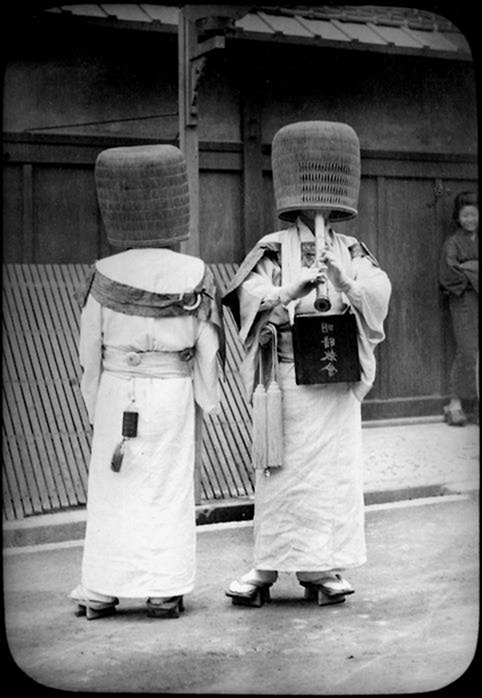 |
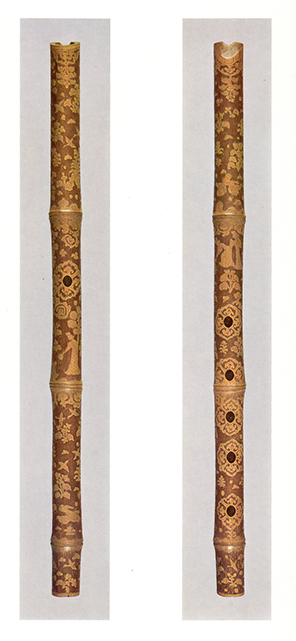 |
 |
 |
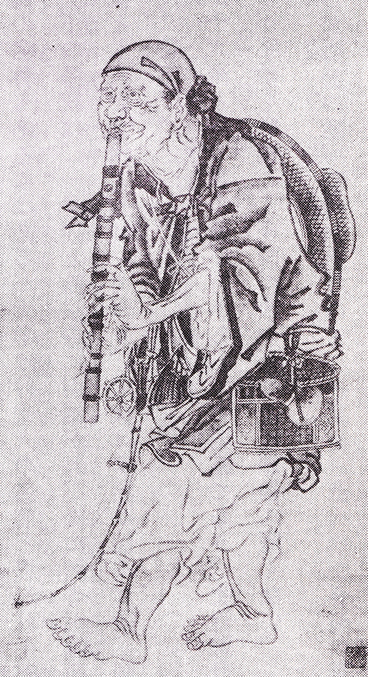 |
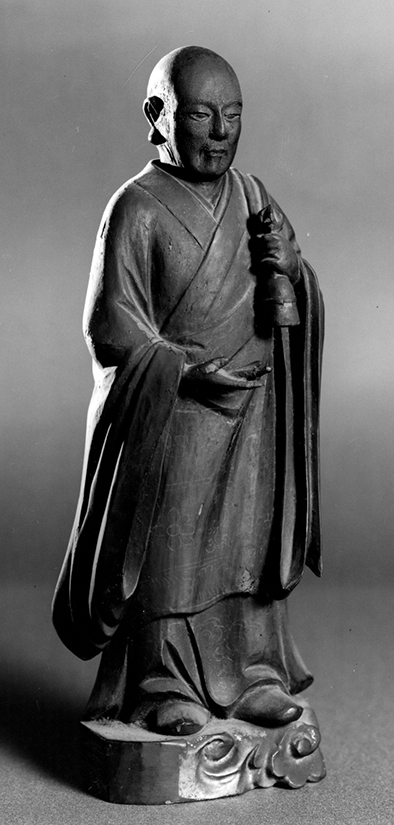 |
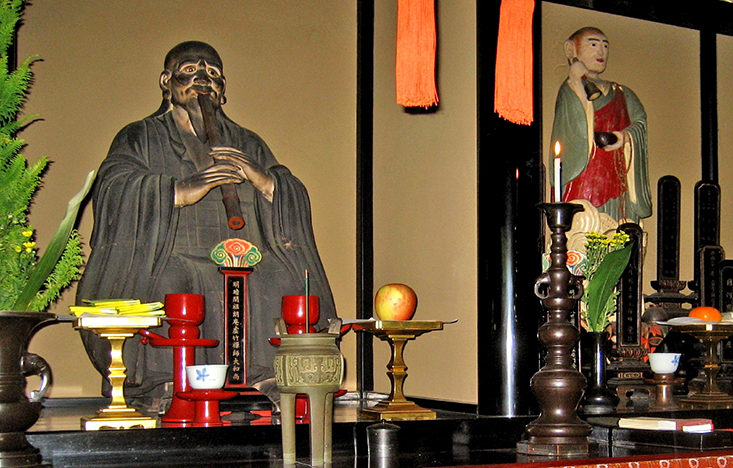 |
 |
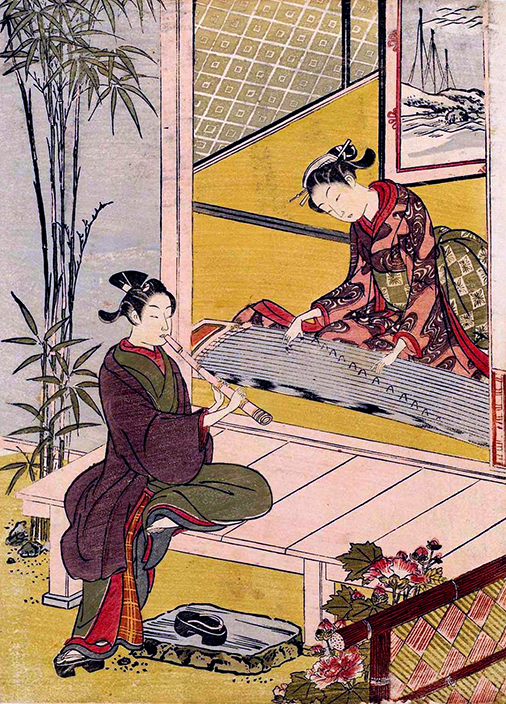 |
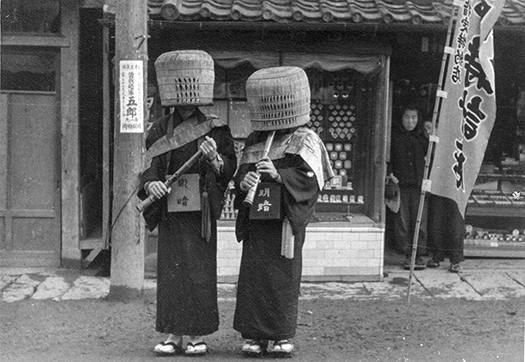 |
